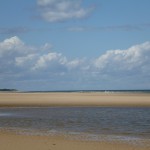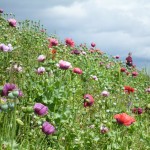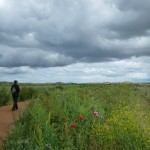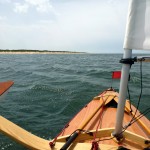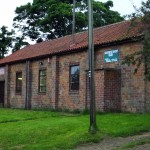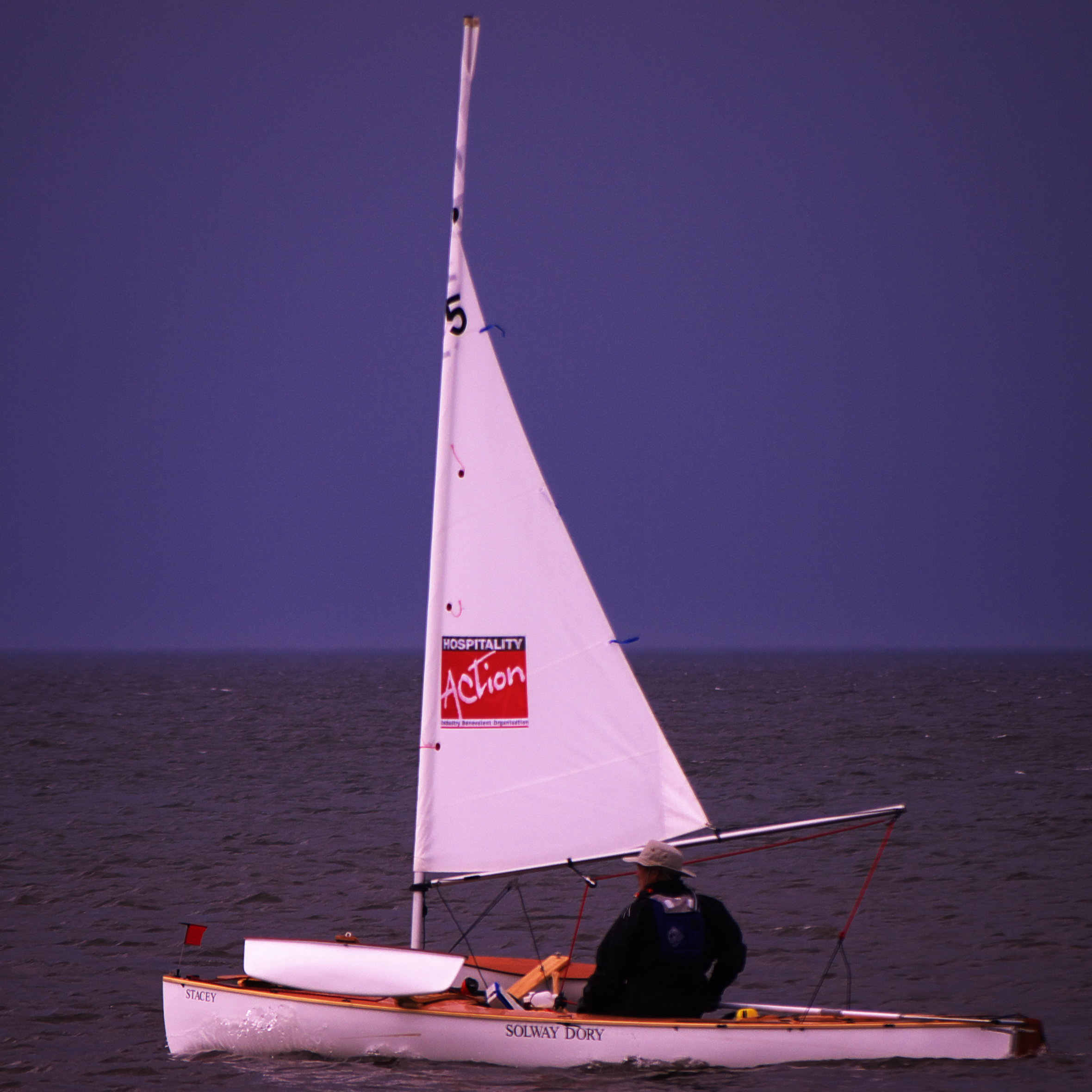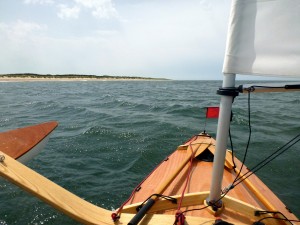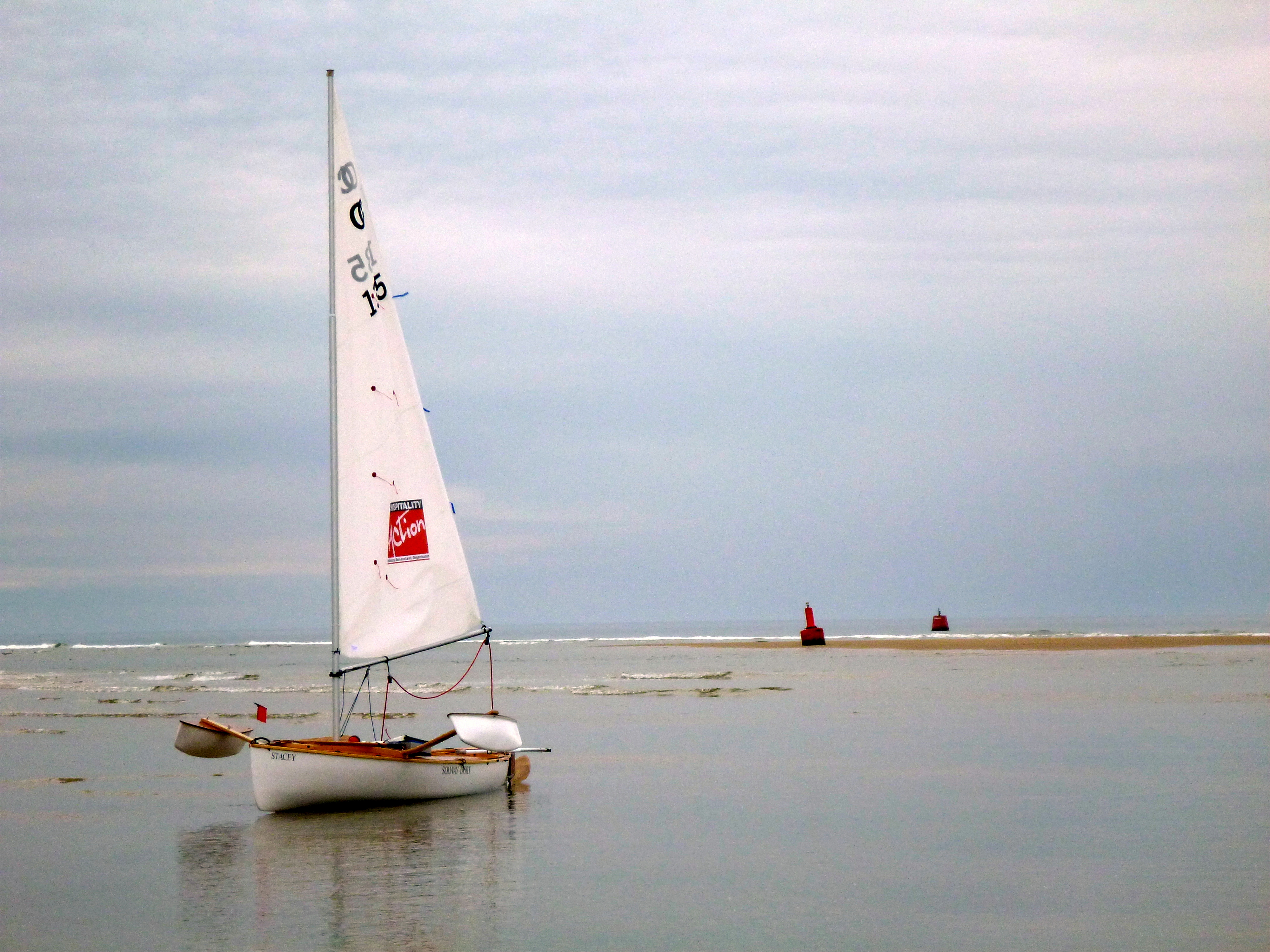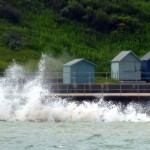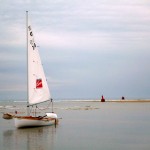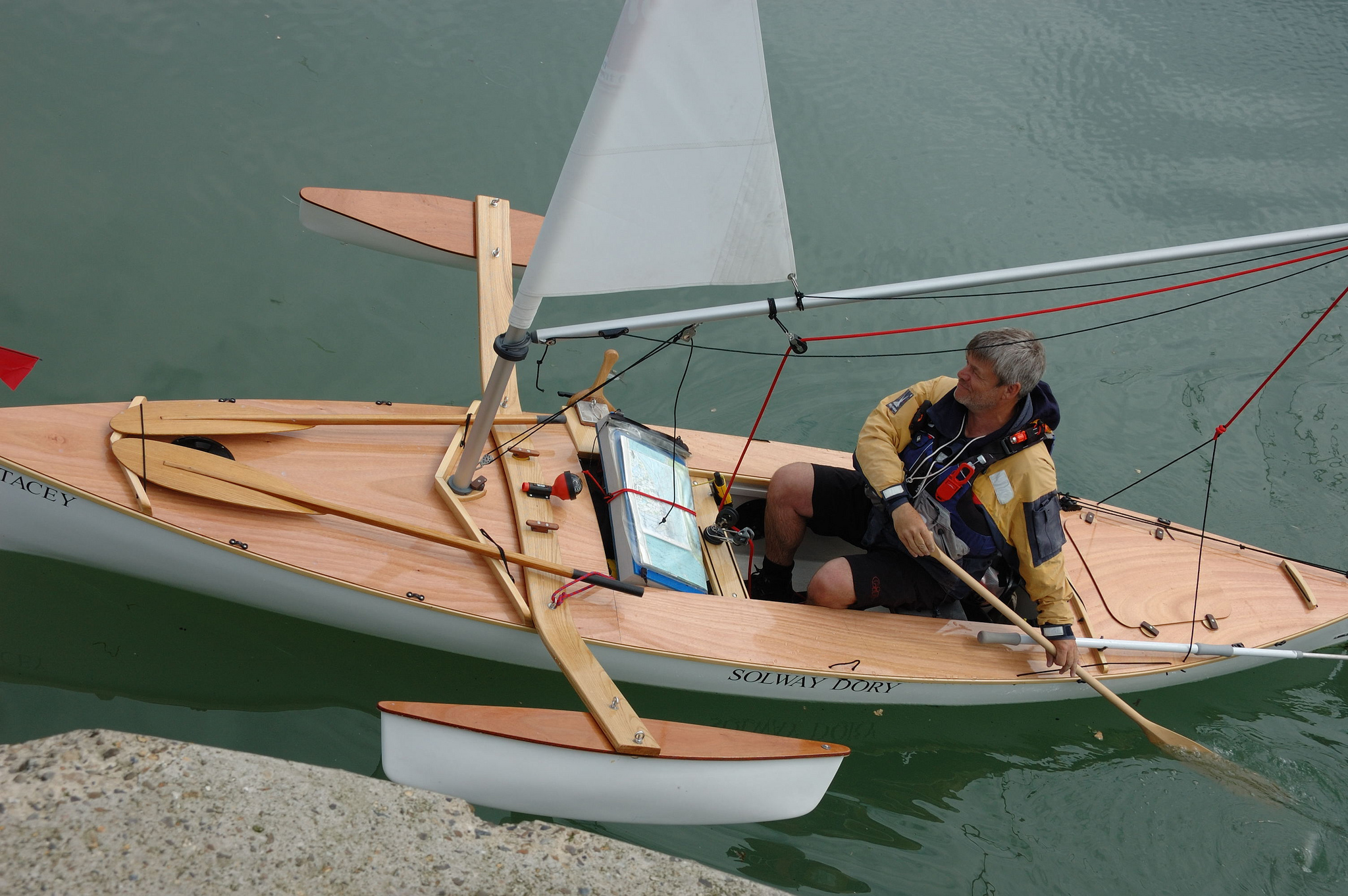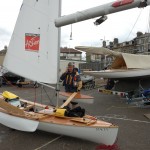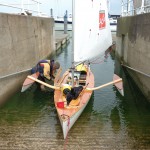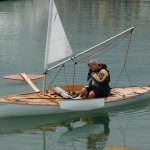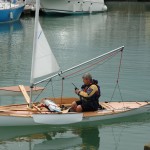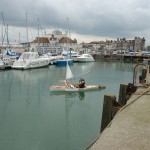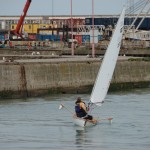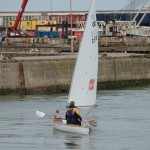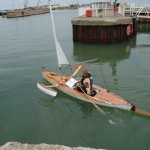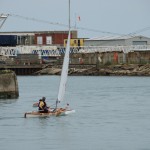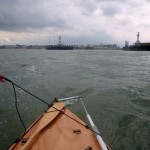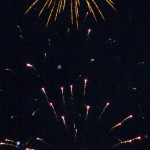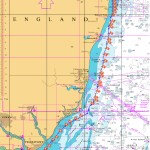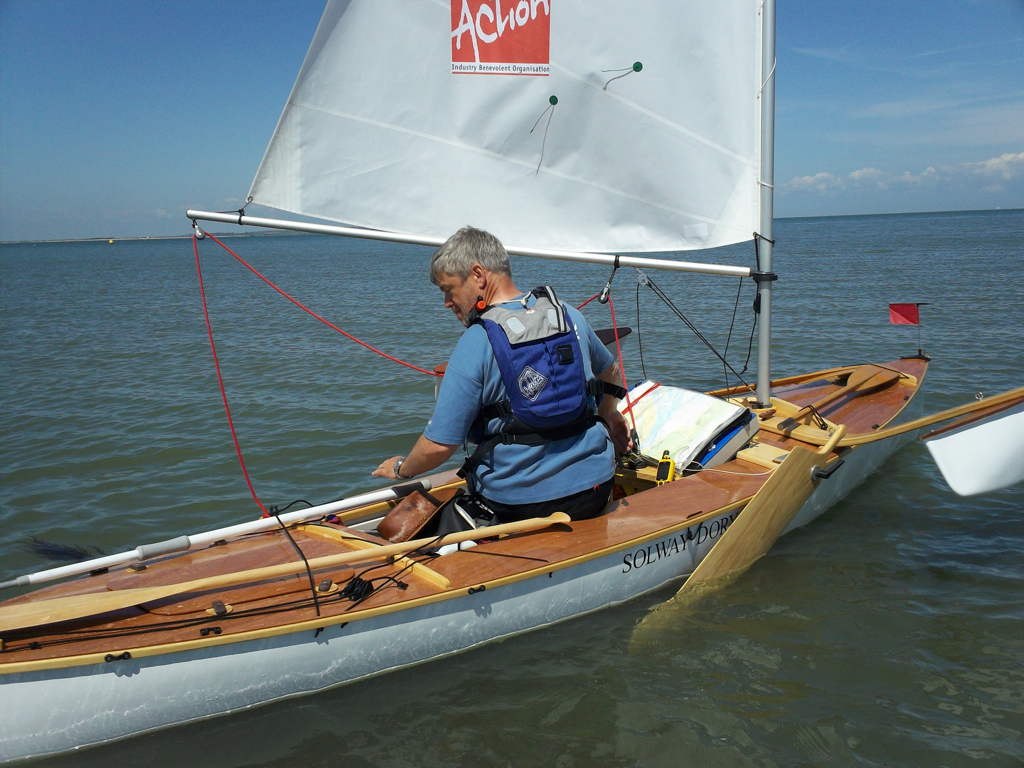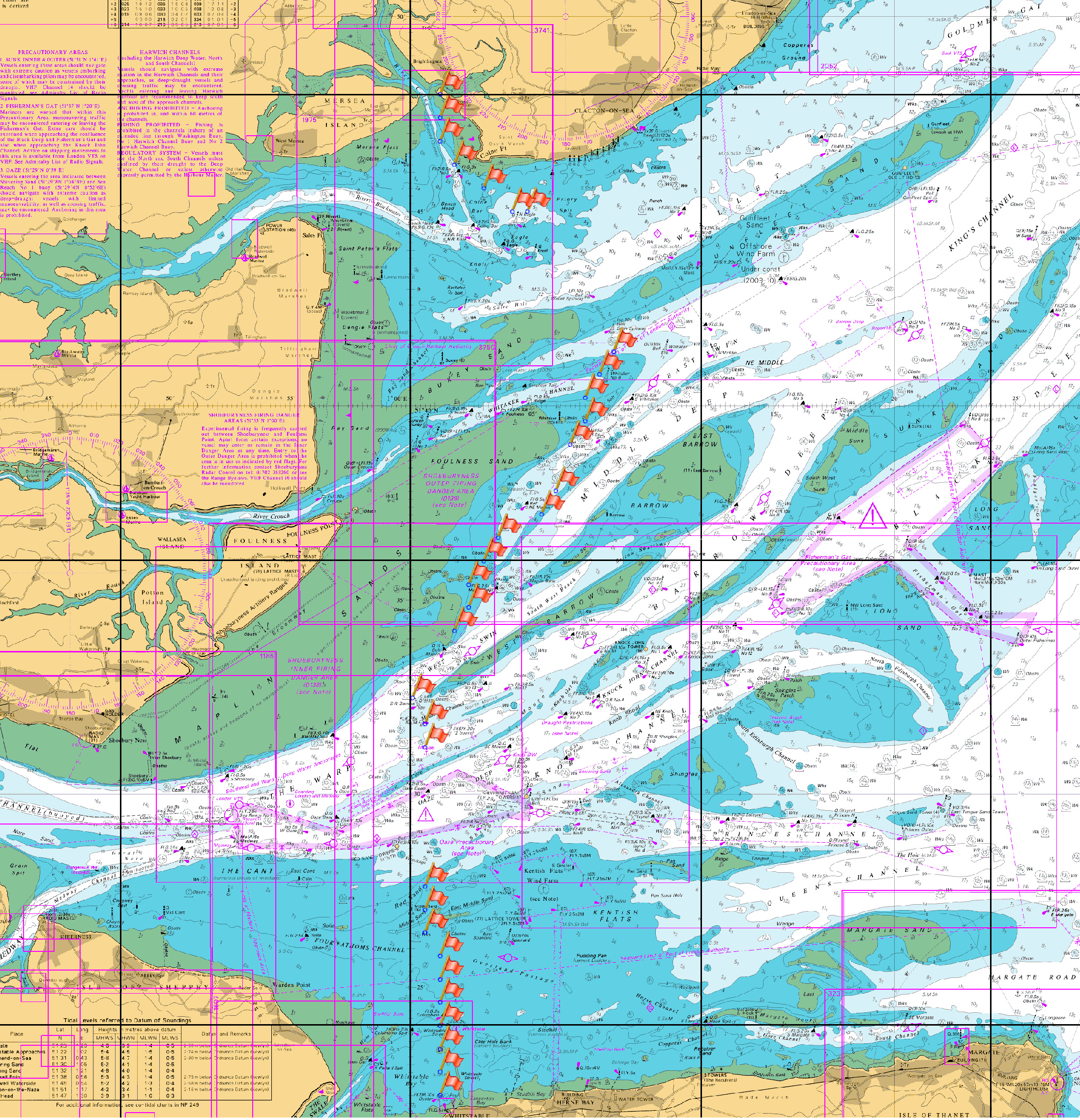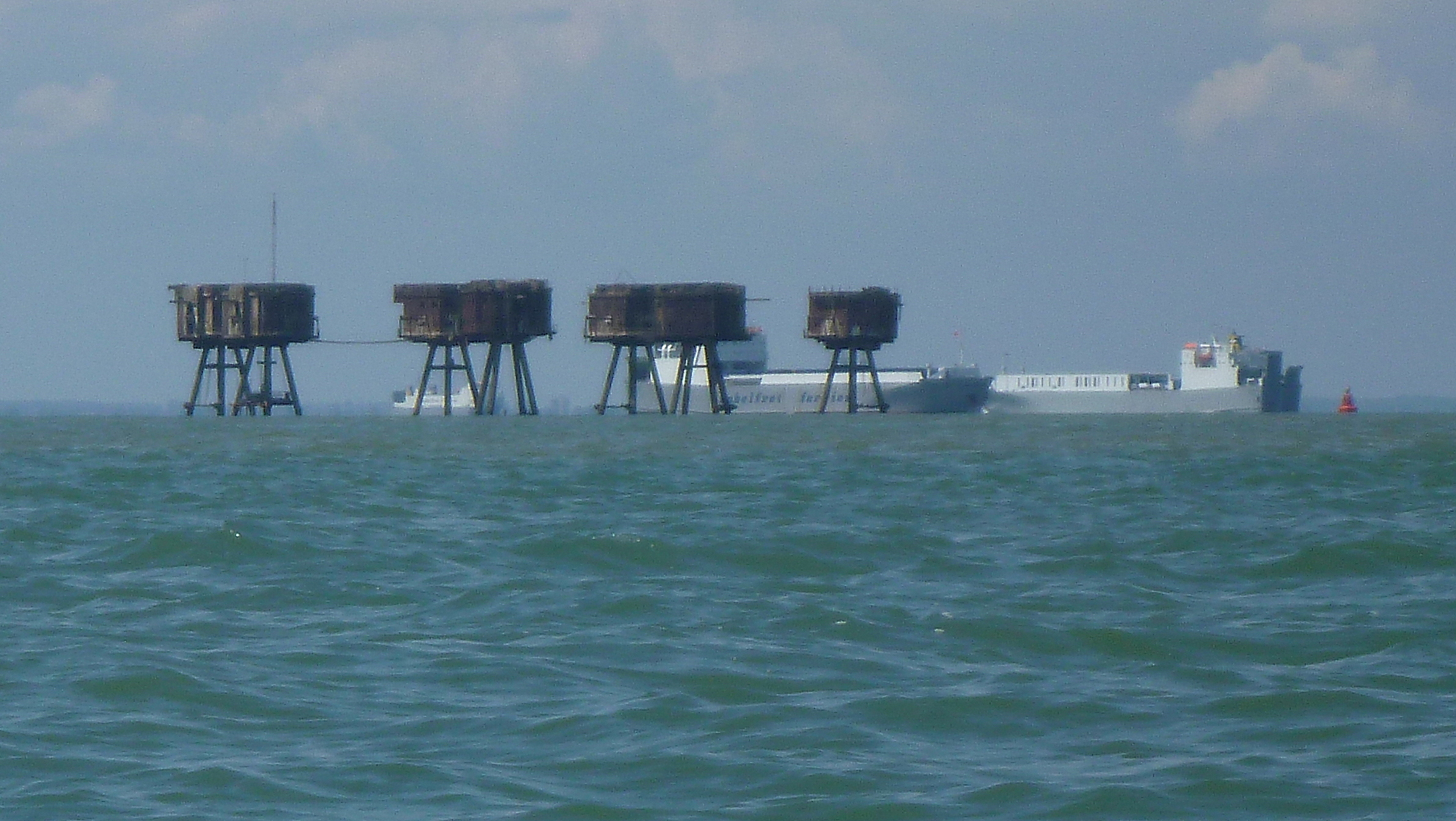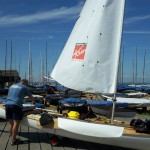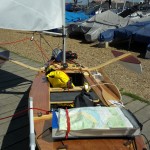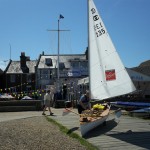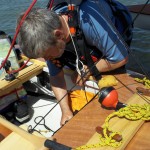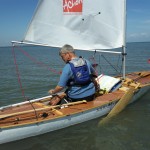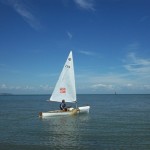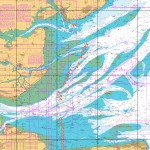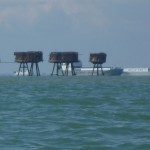- Skegness Yacht Club
An interlude between one spell of strong winds and another had allowed me to enjoy a pleasant sail from Wells to Hunstanton (see previous post), but the forecast for the next few days was poor – with strong winds and periods of heavy rain. However, Hunstanton Sailing Club had said I could store Stacey next to their clubhouse and I’d found a very comfortable B&B nearby, The Shellbrooke, where the owners had offered me a concessionary rate. Friday was a day to catch up on blogging and planning and the silver lining was that the period of bad weather had again coincided with an opportunity to spend time with Katherine, who’d been able to drive from Southampton to spend the weekend with me.
The North Norfolk Coast had been a great surprise. Huge largely deserted wide sandy beaches and sand dunes hidden behind salt marshes with a profusion of wild flowers and birds. On Saturday we drove to Burnham Overy Staithe and parked next to a small creek running through the a marsh. An attractive array of traditional looking small boats populated the inlet and we visited the well stocked chandlers in a white painted barn where I bought some jubilee clips, another dry bag and some other boating bits and pieces. We then walked in the sunshine along the top of a sea-defence dyke running for one and half miles towards the sand dunes bordering the beach. Each side we could see pasture land, marsh and distant woodland. Along the dyke were an incredible array of thousands of poppies nodding in the wind, with colours ranging from pink, red, violet and on to a deep deep purple. We spent some time trying to capture this scene in photos before walking on to the dunes and over to a breathtakingly beautiful beach and the blue North Sea beyond.
One of the purposes of sailing around Britain (or at least attempting to do so) has been to get to know my native country better and to somehow join together some of the places along the coast I’ve known during my childhood and adult life. As a child, lying in bed at night when staying with my grandparents in a cottage near Bamburgh (Northumberland), I’d watch the flash of the Longstone Lighthouse illuminating the room as I fell asleep. Also in my younger years were holidays on Arran with bike rides along lanes, fishing from beaches and walking up Goat Fell, over 2,000 feet high. Later, I’d walk along the Purbeck coastline, sail in the Hebrides, along the South Coast and in the Solent, and visit other coastal towns and ports by bicycle, car and by sea. Marking these locations as dots on a blank page would provide a sketchy outline of some of Britain’s varied and frequently beautiful coastline. So maybe what I’m doing is adding more dots to this outline and by sailing between them, joining up the dots to create are more complete picture of the British coast. I’m also creating a list of places to revisit, including Rye, Whitstable and the North Norfolk coast.
We walked on, along the beach in the sunshine, some five miles to Wells… where I couldn’t resist going aboard the Albatross again for a lunch of excellent Dutch pea soup with bread and beer. Sunday was spent writing and reading with a short beach walk and a pub meal before Katherine had to depart for Southampton.
The sailing prospects for the next day were looking poor. My plan was to cross the Wash at the first available opportunity and head for Wainfleet haven, South of Skegness. John, the Commodore of Skegness Yacht Club, had been texting me with his thoughts on the weather the crossing and how to navigate to the tricky entrance to Wainfleet Haven. Les, who helped me with boat storage at Hunstanton Sailing Club, had also provided much useful information about crossing the Wash with it’s complex tides, shifting sandbanks and rough seas. Both John and Les knew the area very well and the consensus was that I needed winds of no greater than force 4 and should time my departure to coincide with favourable tidal streams. I was feeling not a little daunted by the Wash, where buoys with names like ‘Sunk Sand’ and ‘Roaring Middle’ convey an impression of treacherous waters. However, by Monday morning the latest forecast showed and improvement making the Wash crossing just doable. I checked out of the B&B and a Peddars Way Travel taxi soon arrived. After hearing about my round Britain sailing attempt, the driver and owner of the company refused to take any payment for transporting me, numerous bags and bits of boat to the sailing club.
Les was at the club where he gave me more advice about crossing the Wash and told me about his previous experience as a lifeboatman. We looked through the club telescope at Roaring Middle buoy (which looks like a lightship) in the far distance. Leaving as late as possible to give the wind a chance to die down a bit more, I departed at 5.15 pm and waved goodbye as I set sail into a grey and stormy looking sea. At least it wasn’t raining. Sailing westward, I hoped to be swept by the ebbing tide to West North West to Roaring Middle, which would confirm my position, before turning North West to cross the Long Sand Bank near high water. Once in the Boston Deep Channel I could sail North East up the channel to find the entrance to Wainfleet Haven. Largish waves coming from the South hit Stacey side-on and sheets of spray flew across the foredeck from left to right. A couple of breaking waves tried to climb aboard but, with Stacey travelling at about 6 knots, the self bailer soon got rid of any water in the boat. I was glad I’d not set sail in any windier conditions. I was relieved when I could finally see Roaring Middle. At least I knew where I was in the middle of the Wash. After passing the buoy I altered course to cross Long Sand.
By around 7 pm I was running down the Boston Deep and could see a sailing yacht with tan sails crossing my bow in the distance. I was also aware, from VHF traffic on channel 16, of a lifeboat launch to a vessel called Alloa with engine failure somewhere in my vicinity. Shortly after the lifeboat appeared in the distance and I realised the yacht and Alloa were one and the same. As the lifeboat passed it altered course to check I was okay and we briefly spoke over the VHF before the crew carried on to Alloa. As the lifeboat towed Alloa back up the main channel behind me, I found the entrance to Wainfleet was not easy to find – but the waves breaking over the banks nearby were small, so I simply sailed over the banks in less than 2 feet of water before reaching the channel. It was apparent I’d arrived a bit late and even in the channel there was sometimes barely enough water to keep us afloat and the tide was falling fast. Luckliy, the high level of rain meant there was a large volume of water flowing down to the sea. The channel meandered about one and a half miles towards the security of the creek next to Skegness Yacht Club. I ran downwind, unfurling more and more sail to maintain speed as the mud banks of the creek became higher and higher on each side. The incentive of company and a night under cover, as opposed to a cold night in the boat on a mud bank somewhere, lead to an increasingly desperate gybes as I followed the downwind chicane of the creek in the failing light. As I neared moored yachts, a fisherman on a small fishing boat observed I’d cut it a bit fine. I agreed. John, Mike and Alex of the yacht club were there to greet me as I arrived and helped me tie up alongside John’s traditional yacht. We loaded my bags into a van and drove the short distance to the clubhouse. Unfortunately, Alloa was unable to get into Wainfleet and spent what I expect was an uncomfortable night at anchor just outside the entrance.
I had imagined the Skegness Yacht Club to be perhaps a grand affair with posh boats and a certain sort of formality. Not so, the clubhouse was more like a well-appointed, brick built scout hut, and I’d sailed into one of the warmest and most cheerful welcomes so far. Not only had John provided copious amounts of help and advice, but John, Mike and Alex had waited for well over two hours to help guide me in and help me ashore. We sat round a large wooden table drinking dark ale and chatting before they departed, promising to be back at 5 am to help Alloa back into the Haven. Tired but warm and dry, I fell asleep in my sleeping bag on the carpeted floor. I would be proud to be a member of a yacht club like this.


